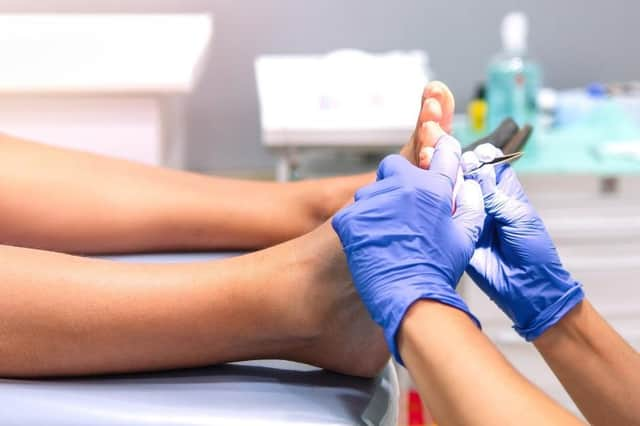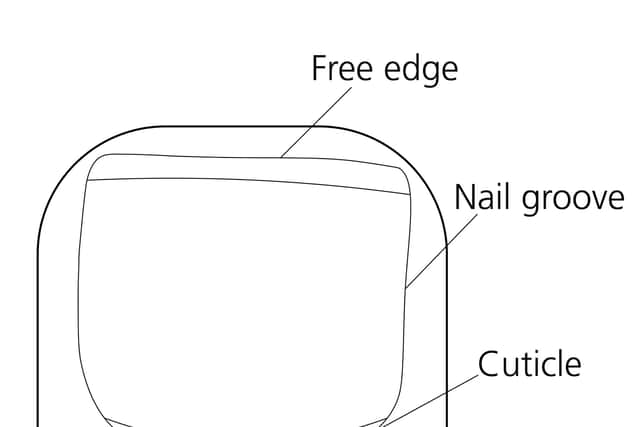COLUMN: What you can do to take care of your toenails


Podiatrists specialise in legs, ankles and feet, providing preventative care, diagnosis, and treatment.
Our service focuses on preventing lower limb amputations that might be needed due to patients having wounds that aren’t healing. Podiatrists assess, diagnose, and treat; ingrown toenails, wounds that are slow to heal due to diabetes, poor circulation, or numbness in the feet.
Advertisement
Hide AdAdvertisement
Hide AdWe work with other medical professionals such as endocrinologists (who are experts on the endocrine system of glands that secrete hormones) and orthopaedics (specialising in the skeletal system) for patients’ treatment plans to promote wound healing.


Looking after your feet is important. We all know some people get embarrassed by their feet and ingrown toenails affect people with sweaty feet more because the skin around the nail becomes softer. This means lots of teenagers get ingrown toenails and usually by the time they seek help it cannot be conservatively managed.
You can easily prevent ingrown toenails, with a few simple changes. Try to keep your feet dry as this will reduce the risk so allow shoes to air/dry before putting them back on and change your socks after getting sweaty or wet.
To keep our nails in a good condition we need to cut them and file them. Here’s how I recommend doing this:
- Cut your nails after a bath or shower as this is when they are softest. Cut the free edge of the nail following the shape of end of the toe. Be careful not to cut it too short and file any rough or sharp edges, so they don’t catch on anything.
- Don’t cut the corners of the nails back into the nail grooves at the edges, allow them to grow forward and free.
- Also don’t use a sharp instrument to clean under the free edge of the nail or the nail groove as this could cause damage.
- You may find that your nails are too hard, thick or brittle to cut with scissors or clippers. The easiest and safest way for maintaining nails like this is to use a good quality nail file.
- File across the free edge of the nails at least once a week when the nails are dry, so before having a bath or shower. This will keep the nails at a safe length. If nails are thickened, they can be maintained by filing over the surface of the nail plate.
- Filing prevents the nails from splitting and breaking off and should ensure they are short enough not to catch the neighbouring toes.
- If you have difficulty bending, you may need to ask someone else to assist you.


These tips work for fingernails too!
Advertisement
Hide AdAdvertisement
Hide AdIf you have any issues with ingrown nails, you can self-refer to the LCHS podiatry service by downloading the referral form on the Podiatry page of the LCHS website and emailing it to [email protected]
To read more about podiatry please see the Royal College of Podiatry and Ingrown toenail – NHS Advice.